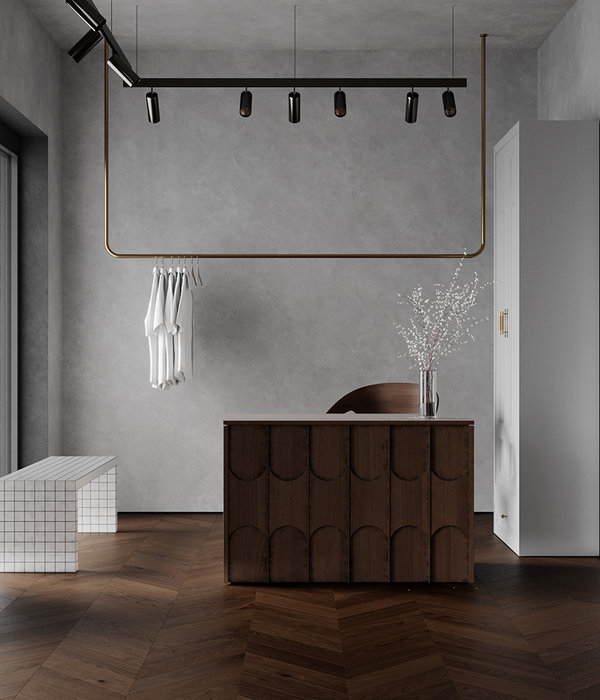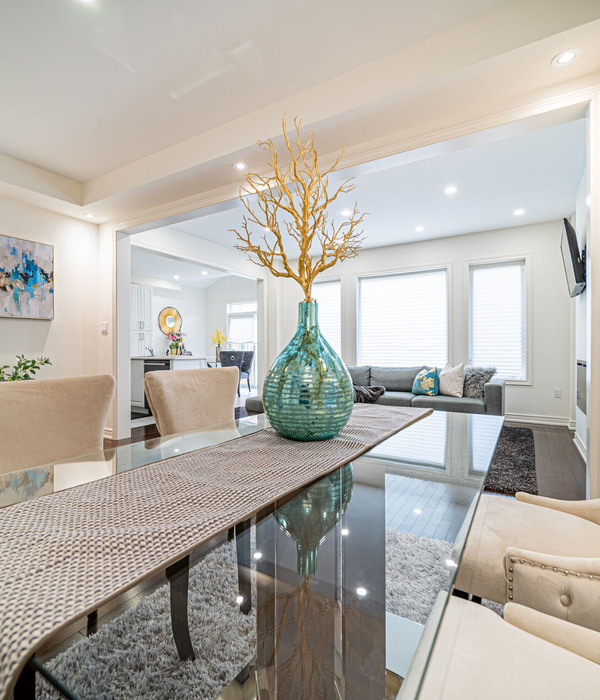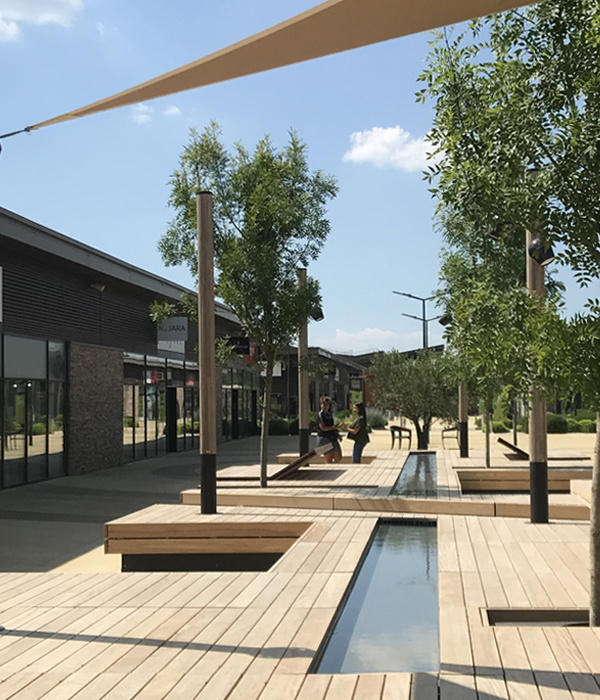开放空间因为有人的使用而不断发生丰富的动态变化。而人们对空间的使用需求和使用方式也在不断发生着日新月异的改变,因此需要考虑具备多层次联系的整体性设计,通过塑造包含不同活动和功能的场所和开放空间,以纳入更高的活跃度和社区联系,持续吸引人们到访。这意味着,空间的创造者同时也必须是空间的策划者。
在建成三年后的今天,我们重新回到上海洋泾地区的LCM置汇旭辉广场,看上海浦东洋泾地区的这一综合开发项目如何成为人们愿意持续重访的空间。
我们也和项目主创景观设计师,普利斯设计集团设计总监、执行董事 Mark Burgess 一起坐下来聊了聊他近期对于商业综合体项目的一些思考。
Mark Burgess
普利斯设计集团
设计总监 | 执行董事
通过设计创造空间联系
Q:
各个场所之间的空间是如何经过设计来创造联系的呢?
How are these spaces between the places being designed to create connection?
A:
连接的想法非常有趣。创造能够提供互动机会的实体空间是项目成功的关键。人们对人际互动的渴望仍然存在。在许多方面,网络的兴起进一步激发了人们对可以参与其中的空间的需求。那些能使人愉悦,或是能创造和保持到访者兴趣的空间,以及那些能让人们与他人会面和交往的空间,都是人们会愿意前往并重访的空间。
The whole idea of connection is interesting. The way we physically design spaces to create the opportunities for interaction is the key to
a successful project. The desire is still there for human interaction, in many ways the rise of online further creates a need for spaces that people can engage with. Spaces that delight or that can create and keep interest, spaces that allow for people to meet and engage with others, are spaces that people will want to visit and return to.
左右滑动查看更多
提高公共空间灵活性和社区联系
Q:
对于公共零售空间如何能够确保更大的活跃度和社区联系时,有哪些考虑因素?
What are some of the considerations, when looking at the public retail spaces to ensure greater activation and community connectivity?
A:
在考虑此类空间的设计时,创造灵活性和适应性强的空间至关重要。灵活性主要反映在活动种类方面:如周末集市、舞台/表演,以及零售宣传活动等。适应性强的空间不仅可以满足当下所有需求,同时更重要的是在未来可以根据需求改变空间。
另外,适应性还需要考虑到使用者对于空间使用方式的发言权。这可以是简单地通过可移动的桌椅来体现,以此来满足更大或更小群体的需求。这创造了一种所有权和联系感,也会持续吸引人们回到这里。
A key factor when considering the design of such spaces is the creation of flexible and adaptable spaces. Flexibility in the range of activity, such as market weekends, stage/performances, and retail publicity events. Adaptable spaces attempt to cater for all these uses while trying to envisage a future that is different to now, so a space that can be changed as needed is critical.
Adaptability also needs to be considered for users having some say in the way a space is used. This can be a simple as tables and chairs that can be moved to create larger or smaller groups - this creates a sense of ownership and connection, which continues to draw people back.
关于差异性和关键吸引力的重要性
Q:
您认为未来的趋势会如何?未来几年的情况会有何不同?
What trends do you see on the horizon? How might things look different in the next few years?
A:
一段时间以来,我们已经看到一个普遍的趋势,即 “体验”作为吸引消费者前往购物中心的关键因素。在海外,尤其是在我们拥有广泛业务的亚洲市场,这种趋势已经转向提供一系列的活动和选择,而这些不一定与零售商家直接相关。例如建立有吸引力的开放游戏区域就非常成功地把家庭带到了大型购物中心。一旦人们去到那里,往往就会买一些食物、看一场电影或是延长购物时间。
这种趋势很可能会继续下去,因为我们可能走向这样一个未来: 零售商场为人们提供感官“触觉”体验,而人们只需在商店里或是回家后订购收货,这就意味着差异性和关键吸引点对于购物中心的成功会变得更加重要。
For a while now we have seen a general trend towards “experience” as a key attractor to retail destinations. Overseas, particularly where we have worked extensively in Asia, this trend has moved towards providing a range of activities and options that are not necessarily directly linked to the retail providers. For example, the creation of open and inviting play areas has been very successful in bringing families out to major retail centres. Once there, people often will buy a meal or go to a movie or shop for longer.
This trend will most likely continue as we move forward to a possible future where the retail outlets are there to provide the “tactile” element of the experience and people will simply order and have the goods delivered, either at the store or when they go home, meaning the importance of a point of difference or key attractor will become more critical to success.
特别感谢贝诺和BPI
短片:Nickolas Strugar / Ravens At Odds
项目素材:三映摄影事务所
……………………
WATCH MORE
……………………
点击“阅读原文”探索网站最新设计和内容
{{item.text_origin}}












